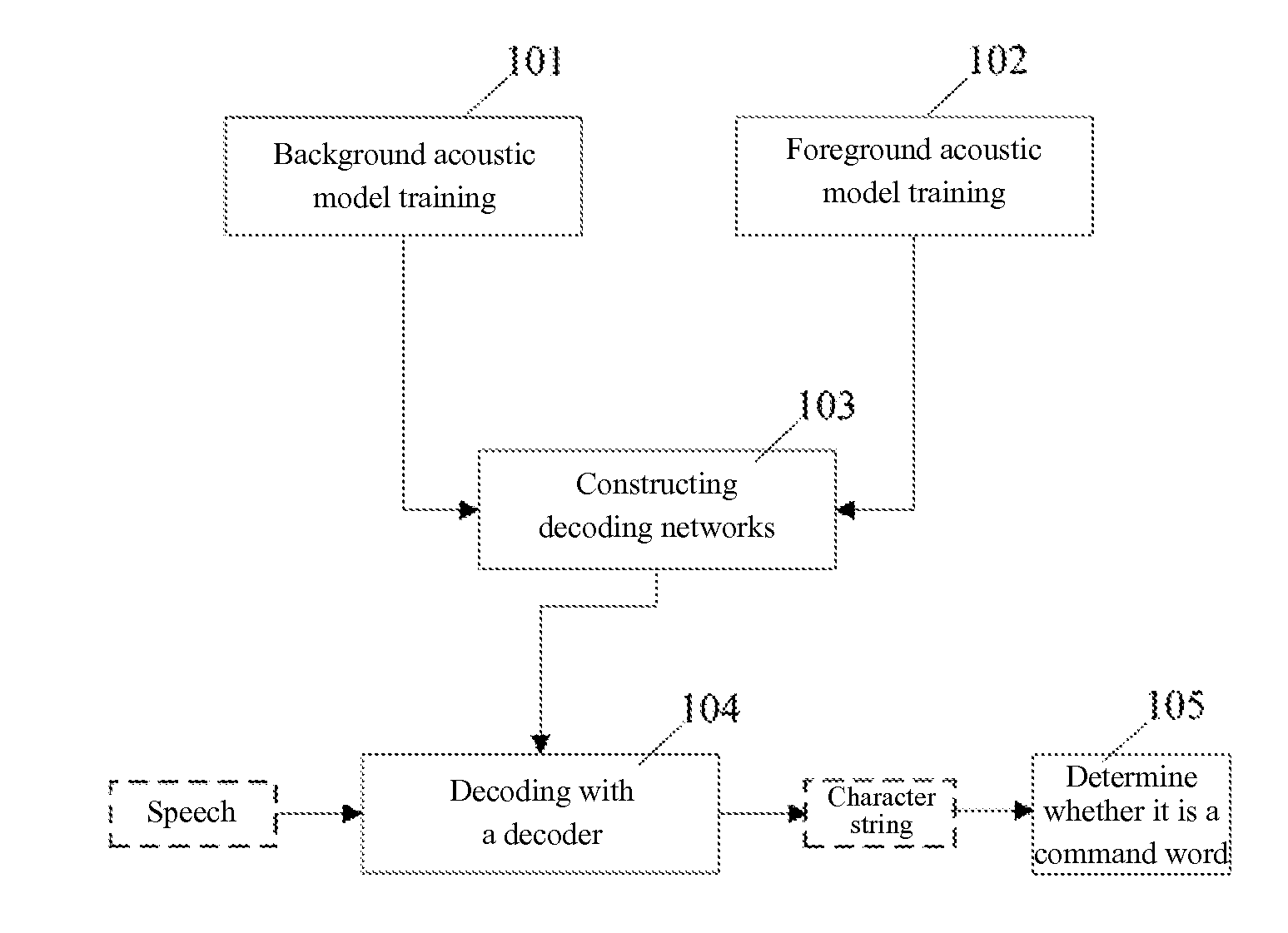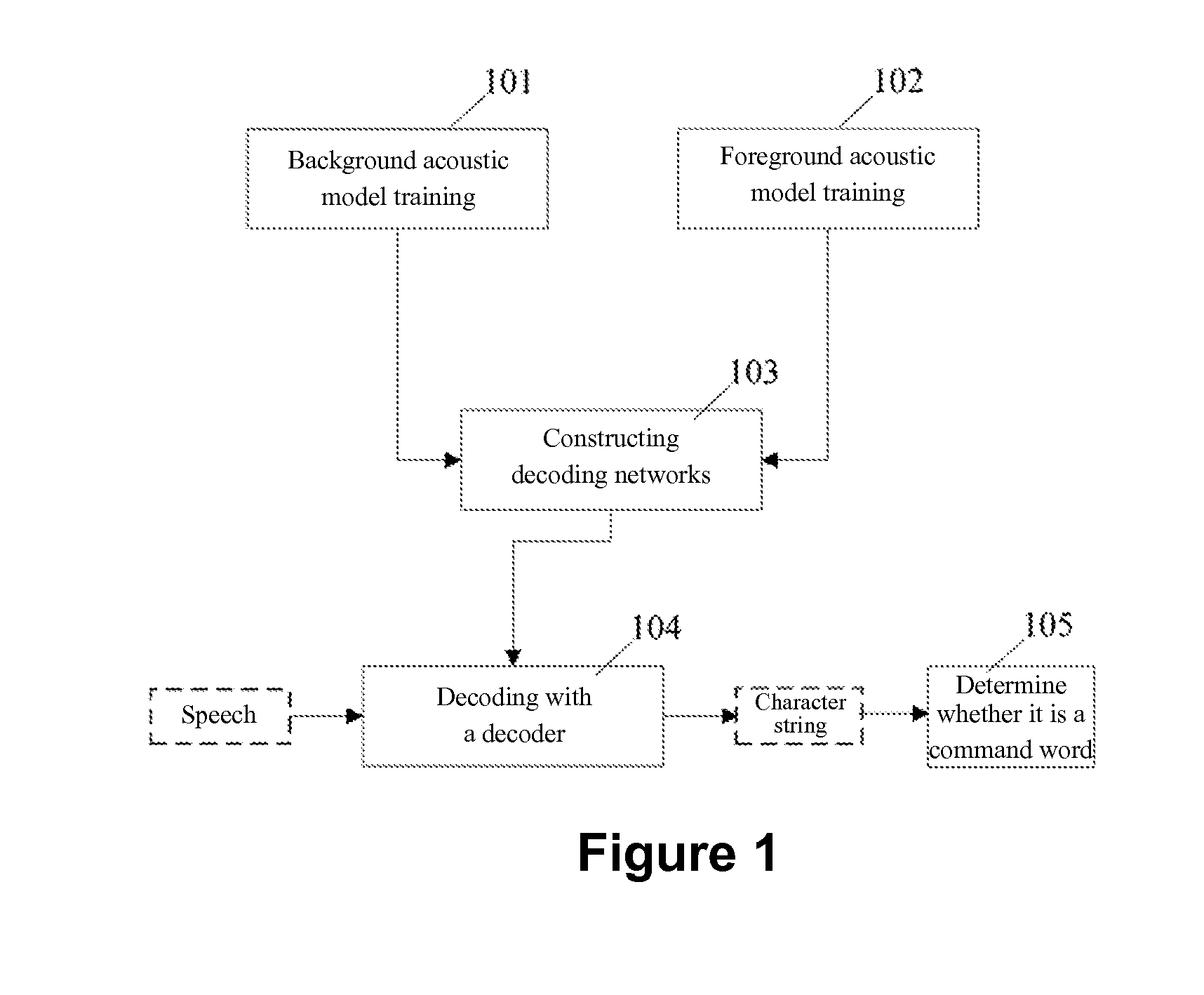Method and system for recognizing speech commands
a speech command and command recognition technology, applied in the field of automatic speech recognition, can solve the problems of user frustration, lack of utilization of speech command recognition system, and general unacceptable false acceptance ra
- Summary
- Abstract
- Description
- Claims
- Application Information
AI Technical Summary
Benefits of technology
Problems solved by technology
Method used
Image
Examples
Embodiment Construction
[0022]The present application provides a method and system for recognizing speech commands. In speech recognition, a pertinent task is to receive a sound sample (e.g., a time series of acoustic data) and assign the sound sample a probability corresponding to the likelihood that the sound sample represents a particular unit of speech in a language's phonology (e.g., a monophone or a triphone). This is done using a so-called “acoustic model.” For example, a system will receive a sound sample sounding like “aaaaa” and, using an acoustic model for the vowel / a / , the system will assign the sound sample a probability that it represents an articulation of the vowel / a / . Likewise, using an acoustic model for the vowel / e / , the system will assign the sound sample a lesser probability that it represents an articulation of the vowel / e / , and in an analogous manner will assign the sound sample a still lesser probability that it representations an articulation of the consonant / p / . In some circu...
PUM
 Login to View More
Login to View More Abstract
Description
Claims
Application Information
 Login to View More
Login to View More - R&D
- Intellectual Property
- Life Sciences
- Materials
- Tech Scout
- Unparalleled Data Quality
- Higher Quality Content
- 60% Fewer Hallucinations
Browse by: Latest US Patents, China's latest patents, Technical Efficacy Thesaurus, Application Domain, Technology Topic, Popular Technical Reports.
© 2025 PatSnap. All rights reserved.Legal|Privacy policy|Modern Slavery Act Transparency Statement|Sitemap|About US| Contact US: help@patsnap.com



